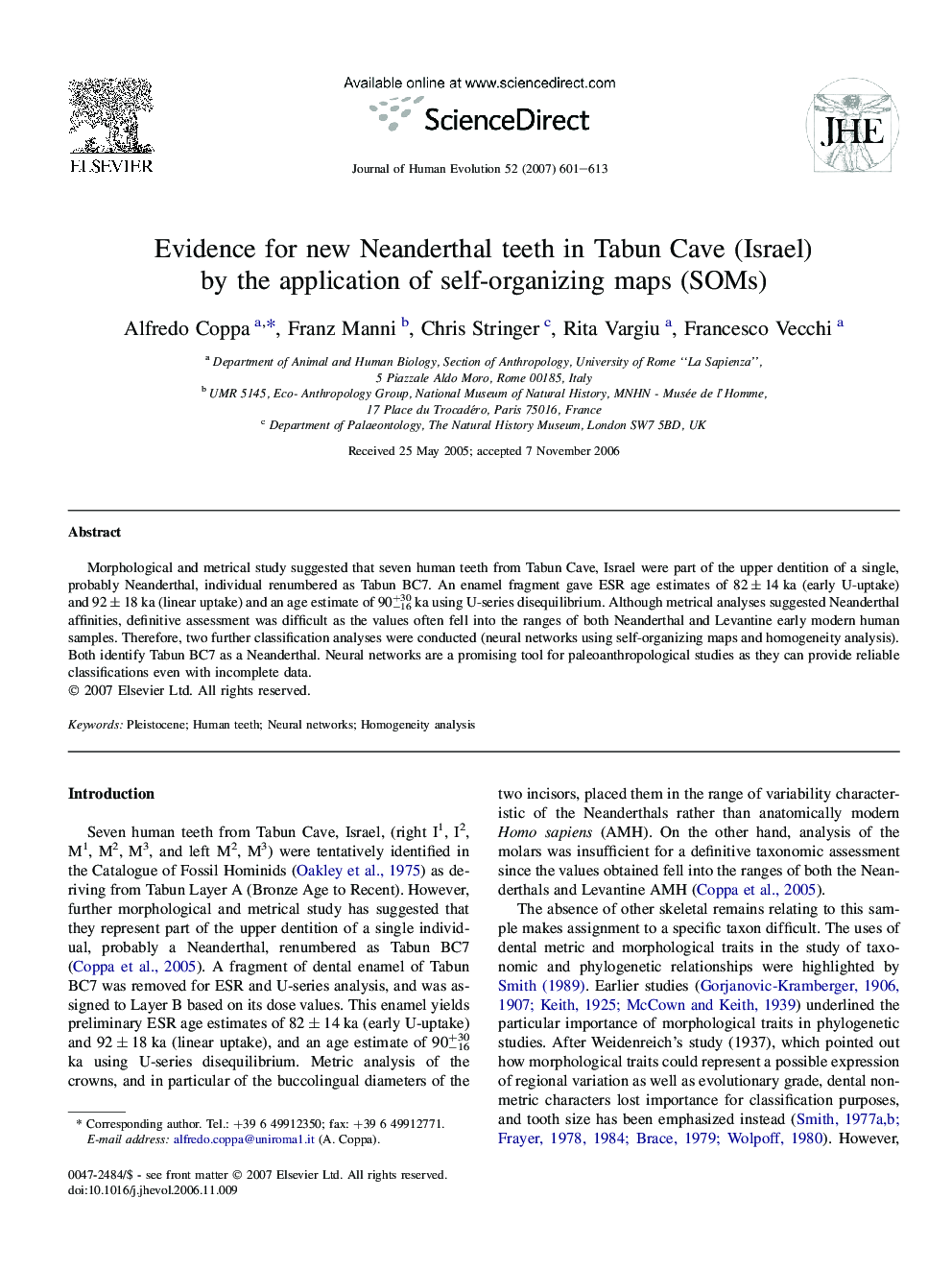| Article ID | Journal | Published Year | Pages | File Type |
|---|---|---|---|---|
| 4557370 | Journal of Human Evolution | 2007 | 13 Pages |
Abstract
Morphological and metrical study suggested that seven human teeth from Tabun Cave, Israel were part of the upper dentition of a single, probably Neanderthal, individual renumbered as Tabun BC7. An enamel fragment gave ESR age estimates of 82 ± 14 ka (early U-uptake) and 92 ± 18 ka (linear uptake) and an age estimate of 90+30â16 ka using U-series disequilibrium. Although metrical analyses suggested Neanderthal affinities, definitive assessment was difficult as the values often fell into the ranges of both Neanderthal and Levantine early modern human samples. Therefore, two further classification analyses were conducted (neural networks using self-organizing maps and homogeneity analysis). Both identify Tabun BC7 as a Neanderthal. Neural networks are a promising tool for paleoanthropological studies as they can provide reliable classifications even with incomplete data.
Related Topics
Life Sciences
Agricultural and Biological Sciences
Ecology, Evolution, Behavior and Systematics
Authors
Alfredo Coppa, Franz Manni, Chris Stringer, Rita Vargiu, Francesco Vecchi,
